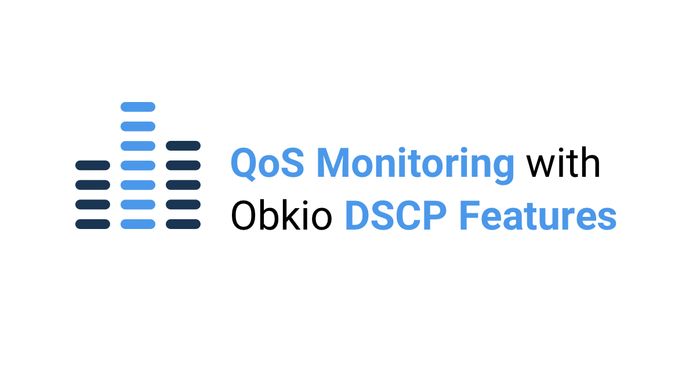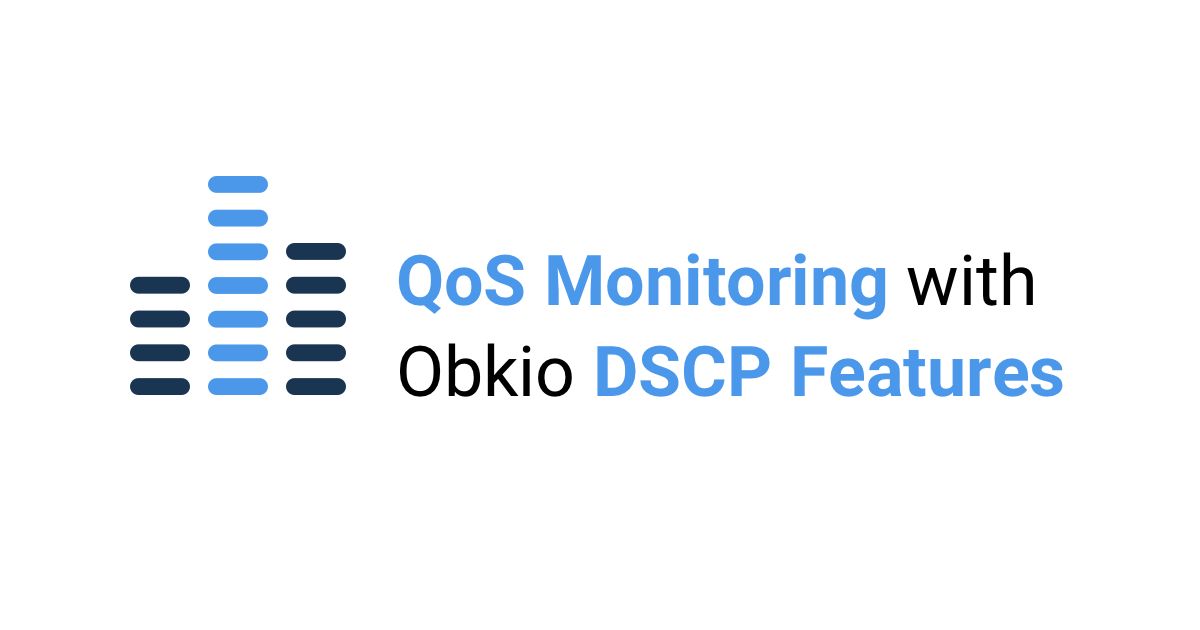Table of Contents
Table of Contents
Businesses and individuals alike have embraced the flexibility and cost-effectiveness of VoIP, but ensuring a seamless and high-quality experience requires more than just a reliable internet connection. Enter Quality of Service (QoS), a crucial framework that governs and prioritizes network traffic to guarantee optimal performance for real-time applications like VoIP.
In this comprehensive blog post, we delve into the realm of QoS for VoIP. From understanding the fundamentals of QoS to practical steps for its effective deployment, we'll guide you through the intricacies of enhancing your VoIP Quality. Additionally, we'll shed light on the essential aspect of monitoring QoS and VoIP performance, offering insights into the tools and techniques that empower you to proactively identify and address potential issues.
Whether you're a business aiming to optimize your communication systems or an individual seeking a smoother VoIP experience, this blog post aims to equip you with the knowledge and tools needed to implement QoS effectively and monitor VoIP performance like a seasoned professional.
Before we get into the nitty-gritty, let’s briefly go over some of the terms we’ll be exploring in the article.
In recent years, Voice over Internet Protocol (VoIP) has emerged as a transformative force in the realm of telecommunications. Unlike traditional phone systems that rely on circuit-switched networks, VoIP leverages the power of the Internet to transmit voice data in the form of digital packets. This technology enables users to make voice calls, send messages, and engage in video conferences using their internet connection, presenting a cost-effective and flexible alternative to conventional phone systems.
VoIP's rising popularity is attributed to its scalability, affordability, and ability to seamlessly integrate with other digital communication tools. However, despite its numerous advantages, ensuring a consistent and high-quality user experience on VoIP platforms requires careful attention to the underlying network conditions.
Quality of Service (QoS) stands as the linchpin in delivering a superior VoIP experience. In the context of network communication, QoS refers to a set of techniques and technologies designed to manage and prioritize data traffic to ensure optimal performance for specific applications, such as VoIP.
The overarching goal of QoS is to guarantee a level of service quality that meets or exceeds the expectations of users, even in the face of varying network conditions.
QoS for VoIP refers to a set of techniques and mechanisms designed to ensure that voice communications over a network receive the necessary priority, resources, and performance to maintain a high level of quality.
VoIP is a real-time application where delays, packet loss, or VoIP jitter can significantly impact the user experience. QoS aims to mitigate these issues by prioritizing VoIP traffic and managing network resources effectively.


As we saw earlier, QoS refers to a set of techniques designed to manage and prioritize data traffic for a variety of different applications and services. But when it comes to VoIP QoS, there are a few more specific key features:
- Traffic Prioritization: QoS assigns different levels of priority to various types of network traffic. In the case of VoIP, voice packets are given higher priority compared to other types of data, such as web browsing or file downloads. This ensures that voice packets are processed and transmitted without delays.
- Minimizing Latency: Latency is the time it takes for a voice packet to travel from the sender to the receiver. High latency can result in noticeable delays during a conversation. QoS mechanisms work to minimize latency, prioritizing the transmission of voice packets to reduce the time it takes for them to reach their destination.
- Jitter Control: Jitter is the variation in the delay of packet arrival. In VoIP, jitter can cause disruptions and inconsistencies in voice quality. QoS helps control jitter by ensuring that voice packets are transmitted with a consistent and predictable timing.
- Packet Loss Mitigation: Packet loss occurs when data packets are lost during transmission. In VoIP, packet loss can lead to gaps or artifacts in the voice signal. QoS helps minimize packet loss by prioritizing the delivery of voice packets and employing error correction mechanisms.
- Bandwidth Management: QoS also involves managing the available network bandwidth to ensure that VoIP traffic gets the necessary resources. This may involve allocating a specific amount of bandwidth to VoIP calls and dynamically adjusting resource allocation based on network conditions.
- Congestion Avoidance: QoS mechanisms help in identifying and alleviating network congestion. By managing traffic flow and prioritizing critical applications like VoIP, QoS helps prevent congestion-related issues that can degrade call quality.
Implementing QoS for VoIP is essential for businesses and individuals who rely on high-quality voice communications. By giving priority to VoIP traffic and optimizing network conditions, QoS helps ensure a smooth and reliable communication experience, even in environments with varying levels of network congestion or limited bandwidth.
As voice data traverses the vast landscape of the Internet, it encounters a myriad of network elements, each with its own characteristics and potential challenges. Without effective QoS measures in place, VoIP traffic may contend with issues such as latency, jitter, and packet loss, ultimately leading to diminished call quality and user dissatisfaction.
QoS intervenes as a proactive solution, enabling network administrators to prioritize and allocate resources in a way that ensures the timely and reliable delivery of voice data. By assigning priority to VoIP traffic over less time-sensitive data, such as emails or file downloads, QoS helps maintain a consistent and crystal-clear communication experience.
Short answer: Yes, QoS is crucial for VoIP applications. VoIP is a real-time communication service that relies on the timely and consistent transmission of voice packets over the Internet. To ensure a high-quality VoIP experience, it's essential to manage and prioritize network traffic effectively, which is the primary role of QoS.
Here’s why:
- Low Latency: VoIP calls require low latency to maintain a natural and real-time conversation. QoS helps minimize delays in the transmission of voice packets, ensuring that they reach their destination promptly.
- Jitter Control: Jitter, or the variation in packet arrival times, can cause disruptions in VoIP calls. QoS mechanisms help control and manage jitter, providing a more consistent and smoother voice communication experience.
- Packet Loss Mitigation: VoIP calls are sensitive to packet loss, as it can lead to gaps or degradation in voice quality. QoS helps minimize packet loss by prioritizing the delivery of voice packets over less time-sensitive data.
- Traffic Prioritization: QoS allows for the prioritization of VoIP traffic over other types of data, such as file downloads or web browsing. This ensures that voice packets receive preferential treatment, especially during periods of network congestion.
- Bandwidth Allocation: QoS helps allocate and reserve sufficient bandwidth for VoIP calls. By ensuring that there is enough bandwidth available for real-time communication, QoS prevents issues such as call drops or audio quality degradation.
- Improved Call Quality: The combination of low latency, controlled jitter, minimized packet loss, and prioritized traffic contributes to overall improved call quality in VoIP applications.
In summary, QoS is essential for optimizing the network to meet the specific requirements of VoIP, providing a reliable and high-quality communication experience. Without QoS, VoIP calls may be susceptible to issues like dropped calls, audio distortion, and other quality-related problems, especially in networks with varying levels of congestion or limited bandwidth.
In the subsequent sections of this blog post, we’ll delve deeper into the intricacies of QoS, exploring its fundamental concepts, various mechanisms, and practical implementation strategies tailored specifically for VoIP environments.
Are you ready to take control of your VoIP experience? Look no further than Obkio's cutting-edge Network Performance Monitoring tool. Designed to empower businesses and individuals alike, this tool is your gateway to ensuring crystal-clear communication, robust Quality of Service (QoS), and optimized network performance for VoIP.
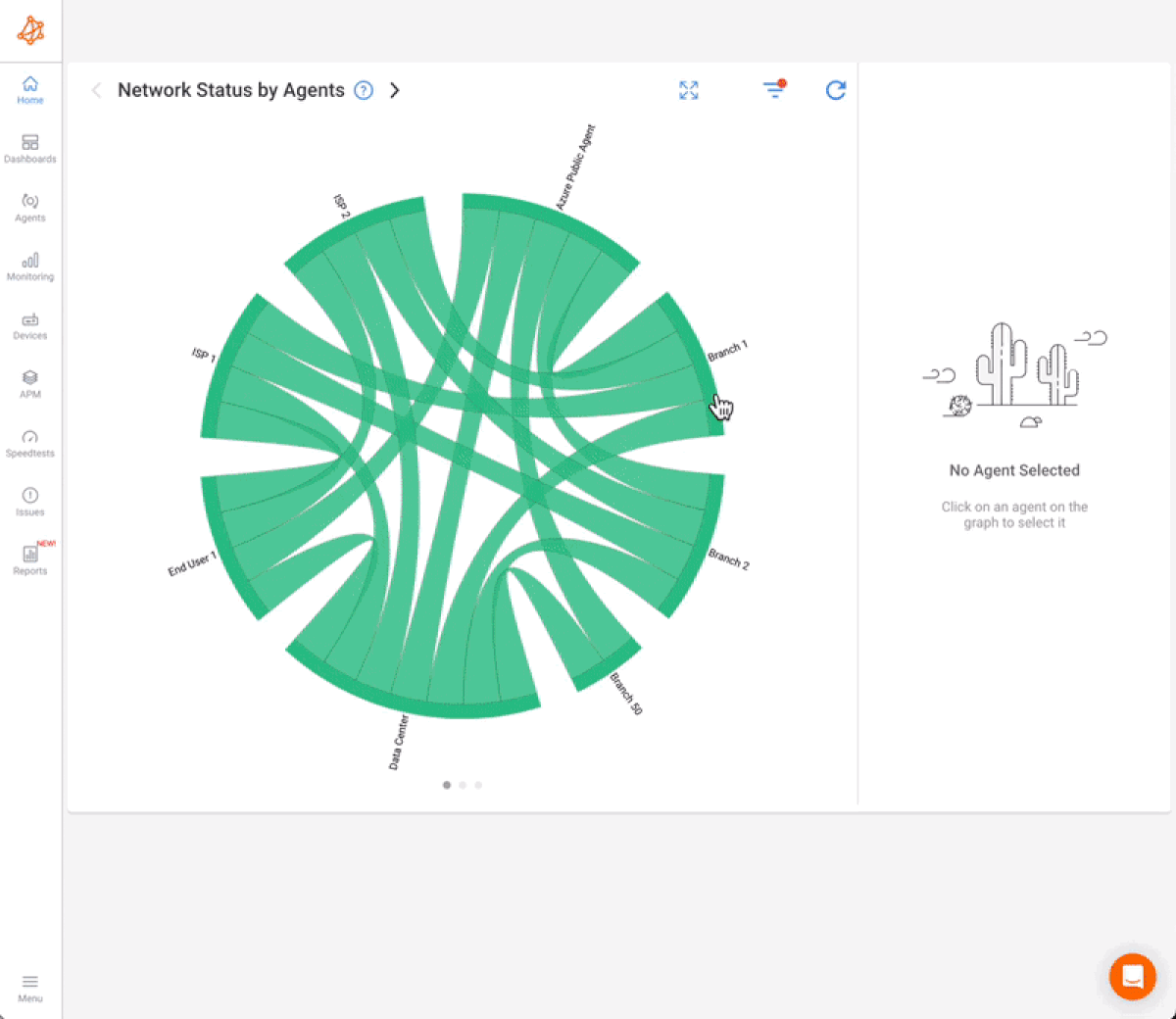
Real-Time VoIP Quality Monitoring:
Obkio provides real-time insights into your VoIP Quality, allowing you to detect and address potential issues before they impact your calls. Say goodbye to dropped calls and hello to uninterrupted conversations.
QoS Insights for Network Optimization:
Dive deep into the intricacies of your network's Quality of Service (QoS) with Obkio's comprehensive monitoring. Understand how your network resources are allocated, identify bottlenecks, and optimize for a smoother VoIP experience.
Monitoring QoS for VoIP:
Obkio's tool allows you to continuously monitor your QoS policies, using DSCP features, specifically for VoIP. Ensure that your QoS settings are effectively prioritizing voice traffic, minimizing latency, and ensuring that your network is finely tuned to meet the demands of real-time communication.
1. Sign Up for Obkio's Network Performance Monitoring Tool:
Visit Obkio’s website and sign up for Obkio's Network Performance Monitoring tool. It's your first step toward a more reliable and efficient VoIP experience.
2. Install the Monitoring Agents:
Easily deploy monitoring agents across your network to start gathering real-time data. Obkio's user-friendly interface guides you through the process, ensuring a seamless setup.
3. Customize Your VoIP Monitoring:
Continuously monitor network performance with a focus on metrics like VoIP Quality, MOS score, QoS, and QoS for VoIP. Obkio puts you in control, allowing you to set parameters that align with your communication needs.
4. Enjoy Enhanced VoIP Performance:
With Obkio's insights at your fingertips, experience a new level of VoIP performance. Enjoy clear calls, minimized disruptions, and the confidence that your network is optimized for real-time communication.
Don't let network issues compromise your VoIP experience. Embrace the power of Obkio's Network Performance Monitoring tool and elevate your communication to new heights. Sign up today and embark on a journey towards a seamlessly connected future!

Before we dive into optimizing VoIP Quality for seamless communication, it's essential to lay a solid foundation in the realm of Quality of Service (QoS). QoS, in the context of networking, acts as the maestro orchestrating the allocation of resources, prioritizing traffic, and ensuring an optimal flow of data across the digital landscape.
Let's explore the fundamental definitions, key concepts, and the crucial role of QoS in shaping the performance of diverse applications. By understanding the broader landscape of QoS, we'll pave the way for a more comprehensive exploration of its tailored application to enhance the quality of our VoIP experiences.
Quality of Service (QoS) is a set of protocols, technologies, and strategies employed in networking to ensure that specific applications or types of traffic receive the necessary level of performance and reliability. In essence, QoS aims to manage and prioritize network resources to meet the requirements of different applications and services using:
- Traffic Classification: QoS involves the classification of network traffic into different categories based on the type of application or service generating the traffic. This classification allows for the implementation of specific policies and treatments for each category.
- Resource Reservation: QoS enables the reservation of network resources for critical applications. By reserving bandwidth or other resources, QoS ensures that applications like VoIP receive the necessary capacity to maintain a high level of performance.
- Packet Prioritization: In QoS, packets are assigned priorities based on their type or the application generating them. Higher-priority packets, such as those from real-time applications like VoIP, are processed and transmitted with greater urgency compared to lower-priority packets.

Differentiated Services Code Point (DSCP):
DSCP is a field in the IP header that enables the marking of packets with a specific code point, indicating the desired level of service. DSCP values range from 0 to 63, with higher values representing higher priority. This marking allows routers and switches to identify and prioritize packets based on their DSCP values.
QoS Markings:
QoS markings, including DSCP, provide a way for devices on a network to understand how to treat different types of traffic. For VoIP, packets may be marked with a specific DSCP value to signify their importance. This marking is crucial for routers and switches to apply QoS policies effectively.
In the intricate dance of data packets traversing networks, particularly in the context of Voice over Internet Protocol (VoIP), the use of DSCP is extremely beneficial. DSCP provides a means of classifying and prioritizing packets based on their importance, ensuring that critical applications like VoIP receive the attention they require.
1. Signifying Importance:
VoIP traffic is inherently time-sensitive, requiring low latency and minimal jitter for a smooth and uninterrupted communication experience. To communicate this urgency to routers and switches, VoIP packets are marked with specific DSCP values within their IP headers.
2. Crucial for QoS Policies:
Routers and switches along the network path rely on DSCP markings to make intelligent decisions regarding how to handle incoming packets. The DSCP values act as a guide, instructing network devices on the level of priority and treatment each packet deserves.
3. Traffic Prioritization:
DSCP values range from 0 to 63, with higher values indicating a higher priority. When routers and switches encounter VoIP packets marked with elevated DSCP values, they understand that these packets demand swift and preferential treatment.
4. Tailoring QoS Treatment:
QoS policies are crafted based on the DSCP markings. For VoIP, these policies might involve giving the packets with higher DSCP values a more direct and expedited route through the network, minimizing the risk of delays, packet loss, and other factors that could compromise call quality.
In essence, the DSCP markings for VoIP packets serve as a language that routers and switches understand, allowing them to navigate the complex terrain of network traffic with precision. This level of communication between devices ensures that the QoS policies put in place are not merely theoretical but actively applied to safeguard the real-time, critical nature of VoIP communications.
Real-Time Protocol (RTP) and Voice over IP (VoIP) Protocols:
VoIP relies on protocols like RTP for the actual transmission of voice data. QoS mechanisms prioritize the handling of RTP packets to ensure a consistent and timely delivery of voice information.
QoS helps in managing the jitter buffer, a mechanism that compensates for variations in packet arrival times. By prioritizing and managing the transmission of VoIP packets, QoS minimizes jitter and contributes to a smoother voice communication experience.
QoS is not limited to the actual voice data but also extends to call signalling protocols such as SIP (Session Initiation Protocol) and H.323. These protocols, vital for establishing and terminating VoIP calls, benefit from prioritization to ensure the responsiveness of call setup processes.
Understanding these key concepts of QoS is fundamental for effectively implementing and managing a network that supports VoIP services. In the subsequent sections, we will explore the various QoS mechanisms and strategies specifically tailored to optimize the performance of VoIP applications.
Learn how to measure VoIP Quality using MOS Score (Mean Opinion Score) & Obkio’s VoIP monitoring solution to identify poor VoIP Quality issues & dropped calls.
Learn more

Embarking on the journey of optimizing Quality of Service (QoS) involves navigating a landscape of sophisticated mechanisms designed to shape and prioritize network traffic. In this section, we'll explore key QoS mechanisms tailored to enhance the performance of real-time applications like Voice over Internet Protocol (VoIP).
From smoothing out traffic flows to prioritizing critical packets, these mechanisms form the backbone of a finely tuned network infrastructure.
Traffic shaping is a QoS mechanism designed to control the flow of network traffic by smoothing outbursts of data. It regulates the rate at which packets are sent to prevent congestion and ensure a more consistent data stream.
How It Works:
- Buffering: Traffic shaping uses buffers to store excess data during peak periods, preventing it from overwhelming the network.
- Token Bucket: Some traffic shaping implementations use a token bucket algorithm, where tokens are added to the bucket at a fixed rate. Each packet sent consumes a token, ensuring a controlled rate of transmission.
How it Applies to QoS for VoIP:
Traffic shaping is beneficial for VoIP by preventing sudden spikes in data transmission, which can lead to jitter and packet loss. Smoothing out the traffic flow ensures a more reliable and consistent VoIP experience.
Priority queuing is a QoS mechanism that assigns different priority levels to different types of network traffic. Higher-priority traffic is processed and transmitted before lower-priority traffic.
How It Works:
- Classification: Traffic is classified into different queues based on criteria such as application type, DSCP markings, or other attributes.
- Priority Handling: Packets in higher-priority queues are given precedence, ensuring they are processed and transmitted ahead of lower-priority packets.
How it Applies to QoS for VoIP:
Priority queuing is particularly relevant for VoIP because it allows voice packets to be placed in a high-priority queue. This ensures that VoIP traffic is processed quickly, reducing latency and ensuring more responsive voice communication.
RSVP is a signalling protocol that enables the reservation of network resources for specific applications or flows. It is used to establish and maintain a guaranteed quality of service for real-time applications.
How It Works:
Reservation Request: Applications or users send reservation requests to the network, specifying the required quality of service parameters.
Network Reservation: The network reserves the necessary resources, such as bandwidth, to meet the specified requirements.
Dynamic Adjustment: RSVP allows for dynamic adjustments to resource reservations based on changing network conditions.
How it Applies to QoS for VoIP:
RSVP can be employed in VoIP networks to ensure a dedicated and guaranteed level of service, minimizing the risk of congestion and optimizing the network for real-time voice communication.
Class of Service (CoS) is a QoS mechanism that categorizes and prioritizes network traffic based on predefined classes. Each class corresponds to a specific level of service, and traffic is treated accordingly.
How It Works:
- Traffic Classification: Traffic is classified into different classes based on criteria such as application type, user, or DSCP markings.
- Priority Handling: Each class is assigned a priority level, and network devices prioritize the transmission of packets based on these priorities.
How it Applies to QoS for VoIP:
CoS is applied in VoIP networks to differentiate between various types of traffic. By assigning higher priority to VoIP traffic, CoS ensures that voice packets receive preferential treatment, optimizing the communication experience.
These QoS mechanisms play a crucial role in shaping the behaviour of network traffic, ensuring that critical applications like VoIP receive the necessary priority and resources for reliable and high-quality performance.

Quality of Service (QoS) for Voice over Internet Protocol (VoIP) works by prioritizing and managing network traffic to ensure a consistent and high-quality communication experience. VoIP is a real-time application that is sensitive to factors like latency, jitter, and packet loss. QoS mechanisms are implemented to address these issues and optimize the network for VoIP traffic.
Here's a breakdown of how QoS for VoIP works:
VoIP traffic is identified and marked for prioritization within the network. This marking can be done using Differentiated Services Code Point (DSCP) values in the IP headers of the packets. Higher-priority markings are assigned to VoIP packets, indicating their importance over other types of data.
Routers and switches along the network path use the DSCP markings to apply specific QoS policies. These policies instruct the network devices on how to handle incoming packets. VoIP packets with higher DSCP values are given preferential treatment, ensuring faster processing and transmission.
QoS helps in the effective allocation of bandwidth to VoIP traffic. By reserving a portion of the available bandwidth for VoIP calls, QoS ensures that voice packets are transmitted with minimal delay and without contention from other types of data.
4. Latency and Jitter Management:
QoS mechanisms work to minimize latency, which is the time it takes for a packet to travel from the sender to the receiver. Additionally, QoS helps manage jitter, the variation in packet arrival times, by prioritizing the timely delivery of VoIP packets.
VoIP calls are sensitive to packet loss, as it can lead to gaps or disruptions in the voice stream. QoS helps mitigate packet loss by prioritizing the delivery of VoIP packets and, in some cases, employing error correction mechanisms to recover lost data.
QoS involves traffic shaping and policing mechanisms to regulate the flow of data. Traffic shaping smooths outbursts of traffic (packet bursts), preventing congestion and ensuring a steady stream of VoIP packets. Traffic policing monitors and enforces compliance with QoS policies.
QoS for VoIP is often dynamic, adapting to changing network conditions in real-time. For example, during periods of network congestion, QoS may dynamically adjust the allocation of resources to prioritize VoIP traffic and maintain call quality.
By implementing these QoS mechanisms, VoIP calls receive the necessary priority and resources to maintain a high level of quality even in challenging network conditions. QoS for VoIP is crucial for businesses and individuals who depend on reliable and clear voice communication over the Internet.

Ready to level up your VoIP game? We’ve now reached the juicy part of the article, teaching you how to fine-tune your network for optimal VoIP performance. We're diving into the nitty-gritty of QoS implementation—assessing needs, configuring routers, and setting policies to ensure your calls stay crisp and interruption-free.
Let's roll up our sleeves and get your network rocking for top-notch VoIP experiences!
Conduct a thorough network assessment of your network's current state. Identify the existing network topology, bandwidth capabilities, and potential points of congestion. Understand the traffic patterns and demands on the network to determine the specific requirements for VoIP.
This analysis will guide the QoS settings you need to implement.
Evaluate the bandwidth needs for VoIP traffic, considering factors such as the number of concurrent calls, the codec used for voice compression, and any additional data traffic on the network. This analysis will inform the bandwidth allocation required to support high-quality VoIP communication.
- Concurrent Calls: Determine the maximum simultaneous calls, as each adds to bandwidth requirements.
- Codec Choice: Different codecs have varied bandwidth needs. Choose based on a balance between quality and efficiency.
- Audio Quality: Assess the desired audio quality, balancing it against bandwidth efficiency.
- Packetization Interval: Smaller intervals can improve call quality but increase bandwidth usage.
- Additional Traffic: Factor in other network activities like browsing and downloads that share bandwidth.
- Overhead and Protocols: Account for the overhead introduced by VoIP protocols (RTP, UDP, IP).
- QoS Requirements: Allocate bandwidth to meet Quality of Service (QoS) priorities for VoIP.
Define the specific QoS requirements for VoIP, considering parameters like latency, jitter, and packet loss. Determine the desired Quality of Service levels that align with the expectations for clear and real-time voice communication.
Latency is the delay between the initiation of a communication event and the actual occurrence of the event. In VoIP, it's the time it takes for a spoken word to be transmitted and heard on the other end.
QoS Requirement: Set an acceptable latency level for VoIP calls. Lower latency values are crucial for real-time conversations, as excessive delays can lead to awkward pauses and hinder the natural flow of communication.
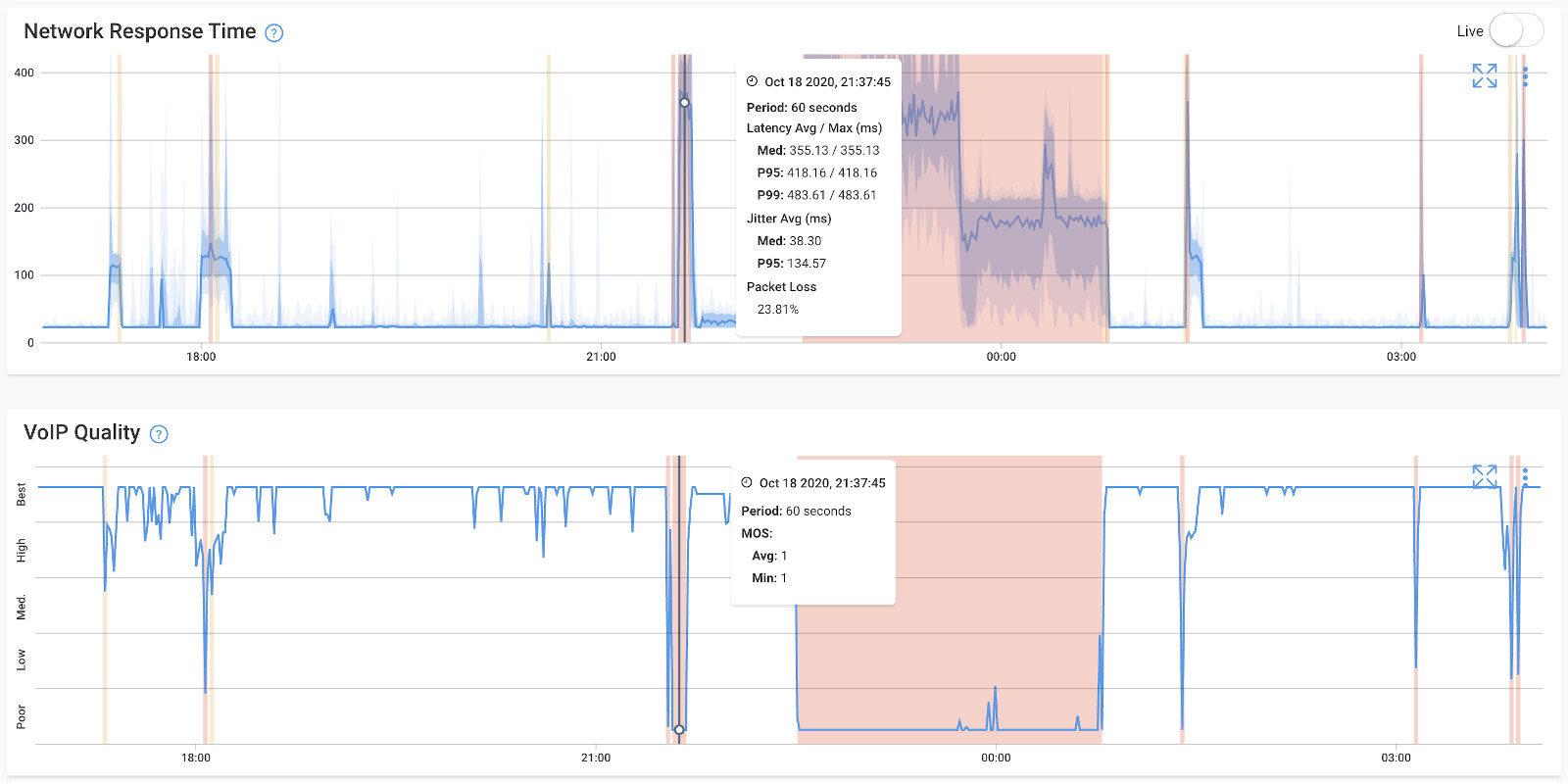
Jitter refers to the variation in packet arrival times. In VoIP, jitter can cause irregularities in the timing of voice packets, leading to poor call quality.
QoS Requirement: Specify the acceptable level of jitter for VoIP traffic. Minimizing jitter ensures a steady and consistent delivery of voice packets, contributing to a smoother communication experience.
Packet loss occurs when data packets fail to reach their destination. In VoIP, packet loss can result in gaps or disruptions in the audio stream.
QoS Requirement: Define the tolerable level of packet loss for VoIP calls. Minimizing packet loss is essential to maintain clear and uninterrupted voice communication.
Quality of Service (QoS) encompasses the collective measures and policies implemented to ensure a certain level of performance in network communication.
QoS Requirement: Determine the desired overall QoS levels that align with expectations for VoIP. This involves setting policies and parameters that prioritize VoIP traffic over non-real-time data, ensuring a reliable and high-quality voice communication experience.
End-user expectations refer to the perceived quality of service from the perspective of those using VoIP services.
QoS Requirement: Consider the expectations of end-users regarding call quality and reliability. Tailor QoS requirements to meet or exceed these expectations for a positive VoIP experience.
Real-time communication standards are benchmarks for the performance of applications like VoIP, emphasizing low latency and minimal disruptions.
QoS Requirement: Align QoS parameters with industry standards for real-time communication, ensuring that your VoIP implementation meets or exceeds these benchmarks.
Ensure that your routers and switches support QoS features. Check the device documentation or interface for QoS-related settings and functionalities. Once in the device interface, explore the settings or configuration sections. Look specifically for QoS-related settings or features. These may be located under a "Quality of Service," "Traffic Management," or a similar section.
Verify that the routers and switches support common QoS protocols and mechanisms, such as Differentiated Services (DiffServ) or Traffic Classifications (TOS). This ensures compatibility with standard QoS practices
Once that’s done, access the configuration settings of your routers and switches and enable QoS. This may involve navigating through the device's web interface or command-line interface.

Set up traffic classification rules to identify VoIP packets. You can use Differentiated Services Code Point (DSCP) markings, access control lists (ACLs), or other classification mechanisms to distinguish VoIP traffic from other data.
1. DSCP Markings:
DSCP is a field in the IP header that assigns a six-bit value to packets, indicating their priority and the type of service they require. Configure your network devices to use DSCP markings for VoIP packets. Assign specific DSCP values to prioritize VoIP traffic over other types of data. Routers and switches can then use these markings to apply QoS policies.
2. Access Control Lists (ACLs):
Access Control Lists (ACLs) are sets of rules that define what network traffic is allowed or denied. They can be used to filter and classify packets based on various criteria. Create ACLs that match the characteristics of VoIP traffic, such as source or destination IP addresses, port numbers, or protocols. Apply these ACLs to routers or switches to classify and prioritize VoIP packets accordingly.
3. Other Classification Mechanisms:
Various other mechanisms exist for classifying and identifying traffic, including protocols, port numbers, or specific application signatures. Depending on your network equipment and requirements, you may use protocol-based classification (e.g., identifying traffic using UDP for VoIP) or port-based classification (assigning specific port numbers for VoIP).
4. Packet Inspection and Deep Packet Inspection (DPI):
Packet inspection involves examining the content of data packets to identify the type of traffic. Deep Packet Inspection (DPI) goes further, analyzing the actual payload of the packets. Implement packet inspection or DPI to look into the content of packets and identify VoIP traffic patterns. This method allows for more granular and accurate classification.
5. Dynamic Classification:
Dynamic classification adapts to changes in network conditions or traffic patterns in real-time. Implement dynamic classification mechanisms that can adjust to variations in VoIP traffic, ensuring consistent prioritization even as network conditions change.
6. Prioritization Based on QoS Policies:
QoS policies dictate how different types of traffic are treated within the network. VoIP traffic can be assigned a higher priority level within these policies. Configure QoS policies to prioritize packets with specific characteristics, as identified through traffic classification rules. Ensure that VoIP traffic receives the necessary priority for optimal performance.
Implement packet marking mechanisms to label VoIP packets with specific DSCP values. This marking is crucial for routers and switches to identify and prioritize VoIP traffic effectively.
DSCP is a field in the IP header that designates the level of service and priority for a packet. It consists of six bits used for marking the packet's priority or class of service.
Assign specific DSCP values to VoIP packets. These markings act as a label indicating the importance and priority of the packet. This marking is crucial for routers and switches to understand how to treat and prioritize VoIP traffic within the network.
DSCP markings allow for the differentiation of traffic classes based on priority levels. Higher DSCP values generally indicate higher priority. Configure your network devices, such as routers and switches, to mark VoIP packets with specific DSCP values. For example, VoIP traffic might be marked with a higher DSCP value than regular data traffic.
Prioritization policies determine the order in which different types of traffic are processed within a network. In the context of VoIP, prioritization ensures that voice communication is given preference over non-real-time data.
Prioritizing VoIP traffic is crucial for maintaining low latency, reducing jitter, and ensuring a seamless and high-quality communication experience.
Implement traffic shaping mechanisms to control the rate of data transmission to prevent network congestion and ensure a smooth flow of traffic.
Implement traffic shaping to regulate the flow of data within your network. Assign higher priority levels to VoIP traffic, allowing it to be transmitted with minimal delays and avoiding contention with less time-sensitive data.
Configure queue management policies to control how packets are queued and dequeued. Priority queuing or weighted fair queuing can be employed to ensure high-priority VoIP packets are processed promptly.
This may involve implementing techniques such as priority queuing or weighted fair queuing to ensure that VoIP packets are processed promptly.
Allocate sufficient bandwidth to support the needs of VoIP traffic, ensuring that it has the necessary resources for clear and uninterrupted communication. Set minimum and maximum bandwidth thresholds for VoIP traffic. Guarantee that VoIP has dedicated bandwidth to meet the demands of real-time communication, preventing issues such as call drops or audio quality degradation during periods of network congestion.
- Bandwidth Reservation: Reserving bandwidth ensures that VoIP packets have a guaranteed amount of network resources, reducing the risk of contention with other data types and preventing performance degradation.
- Minimum Bandwidth Threshold: Define the minimum amount of bandwidth that must be available for VoIP traffic at all times. This ensures that even during periods of network congestion, VoIP calls receive a baseline level of resources, minimizing the risk of call quality degradation.
- Maximum Bandwidth Threshold: Define the maximum amount of bandwidth that VoIP traffic can utilize. This prevents VoIP from monopolizing network resources, ensuring a fair distribution of bandwidth among different types of traffic.
- Dynamic Bandwidth Allocation: Implement mechanisms that dynamically adjust bandwidth allocation for VoIP traffic. This ensures that the network can adapt to fluctuations in demand and provide additional resources during peak communication times.
- Traffic Shaping for Bandwidth Control: Integrate traffic shaping as part of bandwidth control. Shape the flow of data to adhere to the specified bandwidth thresholds, preventing network congestion and ensuring that VoIP traffic receives the necessary resources.
By following these steps, you can effectively set up QoS for VoIP, creating an environment where voice communication receives the necessary priority and resources for a reliable and high-quality experience.
The final two steps in the process deserve their own sections, let’s get into monitoring and optimizing QoS for VoIP!
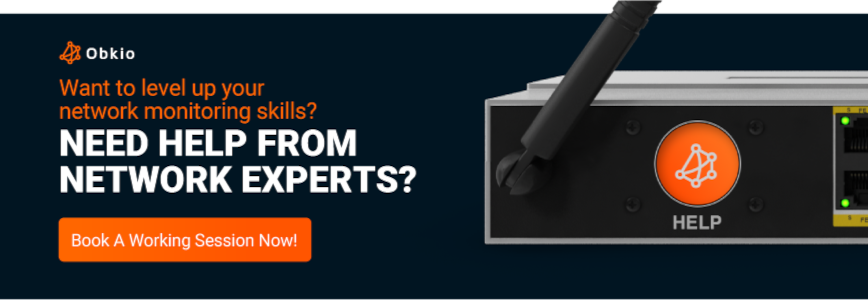
Implementing QoS for VoIP is a multifaceted process that requires continuous monitoring and optimization. This step is crucial in ensuring that VoIP traffic consistently meets performance expectations. By leveraging dedicated monitoring tools, such as Obkio, and proactively optimizing QoS settings based on evolving network conditions, organizations can maintain a seamless and high-quality VoIP communication experience.
Obkio's NPM tool is a comprehensive solution designed to monitor network performance, including the status and efficiency of your QoS for VoIP settings. It provides real-time insights into critical performance metrics, allowing you to track factors such as latency, jitter, packet loss, and overall call quality. With Obkio, you gain the ability to proactively identify and address any deviations from expected performance, ensuring a seamless VoIP experience.

Obkio Network Performance Monitoring software continuously measures your network performance by sending and monitoring data packets through your network every 500ms using Network Monitoring Agents.
Network Monitoring Agents deployed in your most important network locations like offices, data centers and clouds exchange continuous synthetic traffic to catch network problems as soon as they happen. QoS Monitoring with Obkio is available on Obkio's Linux, Virtual Appliance and Hardware Appliance Monitoring Agents.
After deploying the Monitoring Agents, it is necessary to configure a Network Monitoring Template to establish the network performance monitoring sessions.
Within this template, you'll find an Advanced Parameters section where you can set up the DSCP code utilized by the Agents for these monitoring sessions. Further details are available in Obkio’s QoS Monitoring Documentation.
Learn how to monitor QoS performance on your private network, including MPLS, SD-WAN, or VPN, using Obkio's DSCP features.
Learn more

All monitoring packets sent for the session will be marked with the selected DSCP code.
This means that the agent will monitor network performance specifically for that CoS. Many users opt to create multiple monitoring templates—two, three, or even four—each designated for a distinct Class of Service (CoS). During network congestion, performance degradation is anticipated solely in the best effort or data CoS, not in the priority or mission-critical CoS.
Configuring the DSCP code used by the client when dispatching network performance packets to the server is crucial. By stipulating the DSCP code, you can gauge end-to-end network performance for a particular class of service, such as VoIP traffic.
This approach ensures accurate QoS configuration. In the event of network degradation, a well-configured QoS-enabled network path should maintain performance levels for the high-priority CoS, while the best-effort data CoS may experience increased latency, jitter, and packet loss rates.
With Obkio’s end-to-end network performance monitoring setup, you can then begin continuously monitoring the metrics that matter most when it comes to your QoS for VoIP setup. These metrics help evaluate the quality and reliability of the VoIP communication. Here are some important metrics to consider:
- Latency: Latency refers to the time it takes for a voice packet to travel from the source to the destination. Low latency is critical for real-time communication to maintain a natural and smooth conversation. High latency can result in delays and disruptions in the conversation.
- Jitter: Jitter is the variation in packet arrival times. Consistent packet arrival times are crucial for smooth VoIP communication. High jitter can lead to uneven audio quality and interruptions.
- Packet Loss: Packet loss occurs when transmitted packets fail to reach their destination. Packet loss can result in missing or distorted audio in VoIP calls. Minimizing packet loss is essential for maintaining clear and uninterrupted communication.
- Bandwidth Utilization: Bandwidth utilization measures the percentage of available network bandwidth used by VoIP traffic. Monitoring bandwidth utilization ensures that VoIP has sufficient resources to transmit data without contention, preventing congestion-related issues.
- DSCP Markings: DSCP markings are used to classify and prioritize packets, indicating the level of service for each packet. Proper DSCP markings help routers and switches prioritize VoIP packets, ensuring they receive preferential treatment over other data types.
- MOS Score (Mean Opinion Score): MOS is a numerical score that represents the quality of a VoIP call based on user opinions. MOS scores provide a subjective measure of call quality, considering factors like clarity, echo, and background noise.
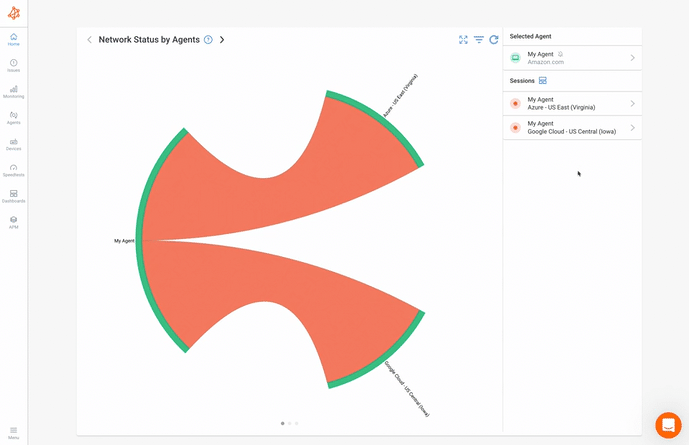
Monitoring these metrics collectively provides a comprehensive view of the health and performance of your VoIP network. Regularly assessing these parameters enables proactive identification of issues, ensuring that QoS for VoIP is maintained at a high standard.
In optimizing VoIP performance, a dual approach is paramount. Firstly, real-time network monitoring alerts play a pivotal role—configuring the monitoring tool to send immediate notifications when performance metrics deviate from acceptable levels ensures swift troubleshooting and intervention, thereby maintaining consistent VoIP quality.
Secondly, historical performance analysis proves equally essential. Obkio’s network monitoring tool allows you to delve into historical performance data, one gains valuable insights into trends and recurring issues. This historical perspective becomes instrumental in making informed decisions for the ongoing optimization of VoIP performance over time.
The combination of real-time alerts and historical analysis establishes a proactive strategy for sustaining high-quality VoIP communication.
Once you’ve begun monitoring your QoS settings, you may realize that things are not working exactly as they should be. That’s why it's important to adopt a dynamic QoS strategy that adapts to evolving network conditions. Real-time adjustments ensure that QoS settings align with changing requirements and maintain optimal VoIP performance.
Regularly review any network changes, expansions, or updates and ensure that QoS settings are compatible with new network configurations to support VoIP effectively.
User experiences can provide valuable insights, guiding adjustments to QoS settings based on actual usage patterns and preferences. Incorporate feedback from VoIP users into the optimization process.
Finally, confirm that QoS configurations align with the current network landscape and are optimized for VoIP traffic.


Once all QoS mechanisms and configurations are in place to prioritize VoIP traffic on your network, the next crucial step is to conduct comprehensive tests on the VoIP system and continuously monitor VoIP performance.
This involves the continuous assessment of key metrics such as latency, jitter, packet loss, and bandwidth utilization to ensure that the network is consistently meeting the desired quality standards for real-time communication.
This testing and monitoring phase is essential to ensure that the desired quality levels are achieved, providing users with a seamless and reliable communication experience.
Proactive Issue Identification: Monitoring VoIP performance allows for the early detection of issues that may impact call quality. Proactively identifying and addressing these issues helps maintain a seamless communication experience.
Optimization Opportunities: Continuous monitoring provides insights into performance trends and areas for improvement. Organizations can identify network optimization opportunities based on historical data and evolving network conditions.
User Experience Assurance: Ensuring a positive user experience is at the core of VoIP monitoring. By regularly assessing performance metrics, organizations can confirm that the QoS measures are effectively supporting clear and reliable voice communication.
Real-time Adaptation: Real-time monitoring enables immediate responses to fluctuations in network conditions. This adaptability is crucial for maintaining optimal VoIP performance, especially during periods of increased traffic or unexpected events.
Unlock the secrets of VoIP monitoring! Discover tools, techniques, and the power of Obkio for unbeatable call quality. Begin your adventure today!
Learn more

Lucky for you, Obkio’s Network Performance Monitoring tool is a pro at VoIP Monitoring!
Obkio's Network Performance Monitoring tool was designed with the aim of streamlining both performance and VoIP monitoring. This emphasis led Obkio to adopt the Mean Opinion Score (MOS) as the benchmark for measuring VoIP quality. Below are the specifics outlining how the VoIP MOS Score is gauged.
The table below examples various qualities and their corresponding minimum MOS Score limits, aligning with the ITU-T standards.
Because most people are not very familiar with the MOS Score and the interpretation of MOS in VoIP Quality, Obkio redesigned the MOS Score graph to create the VoIP Quality graph. Obkio’s MOS VoIP Quality graph categorizes, for every minute, the MOS Call Quality as
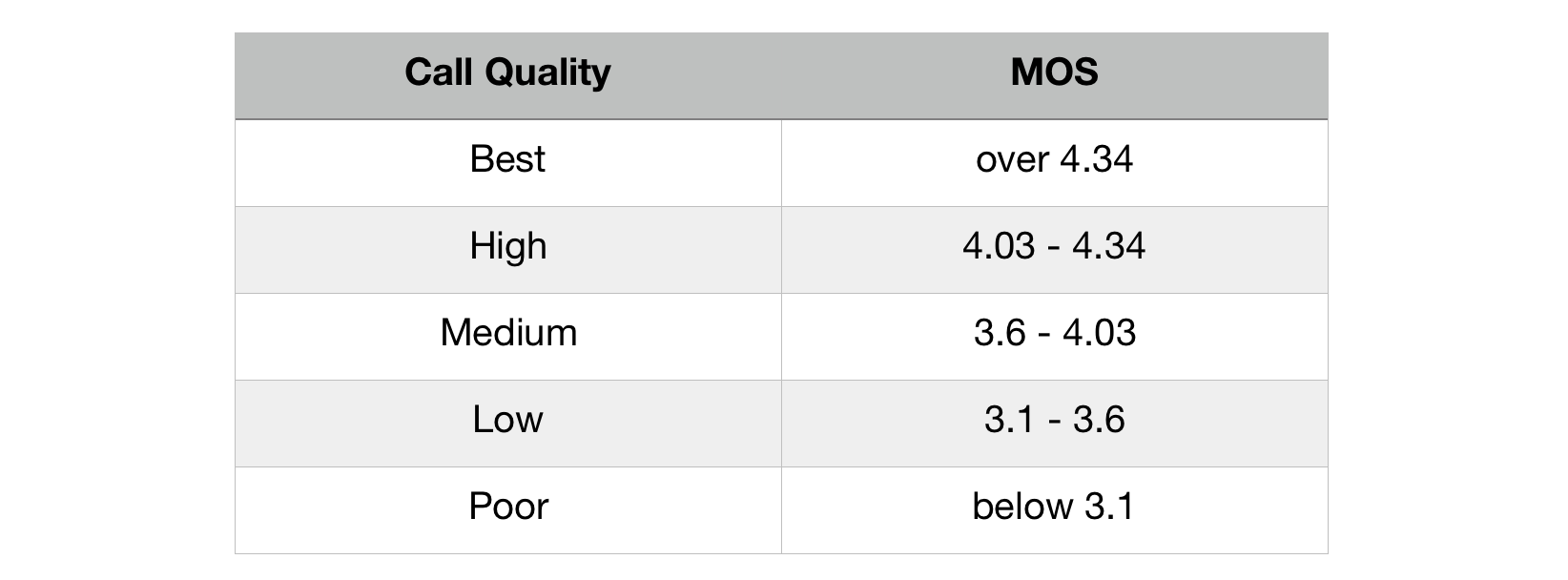
- Best
- High
- Medium
- Low
- or Poor
With Obkio's VoIP Monitor, you can measure VoIP quality using the MOS score and proactively identify and troubleshoot VoIP issues before they even affect your users. Obkio's user-friendly interface and real-time monitoring make it easy to keep your VoIP system running smoothly and ensure the best possible call quality.

To monitor VoIP performance in all network locations, deploy Network Monitoring Agents in key network locations like offices, data centers and clouds. The Agents exchange synthetic traffic with each other to measure core network metrics that are essential to VoIP performance, like MOS score, VoIP Quality, packet loss, jitter, and more.
- Local Agents: Installed in the targeted office location experiencing VoIP Quality issues. There are several Agent types available (all with the same features), and they can be installed on MacOS, Windows, Linux and more.
- Public Monitoring Agent: These are deployed over the Internet and managed by Obkio. They compare network and VoIP performance up to the Internet and can be used to monitor VoIP Quality for apps like Microsoft Teams and Zoom. They can also help identify if the network and VoIP issues are global or specific to a destination.
As mentioned earlier, a tool such as Obkio takes care of automatically assessing your VoIP Quality. After deploying your Monitoring Agents, they initiate the exchange of synthetic traffic to measure and evaluate VoIP Quality.
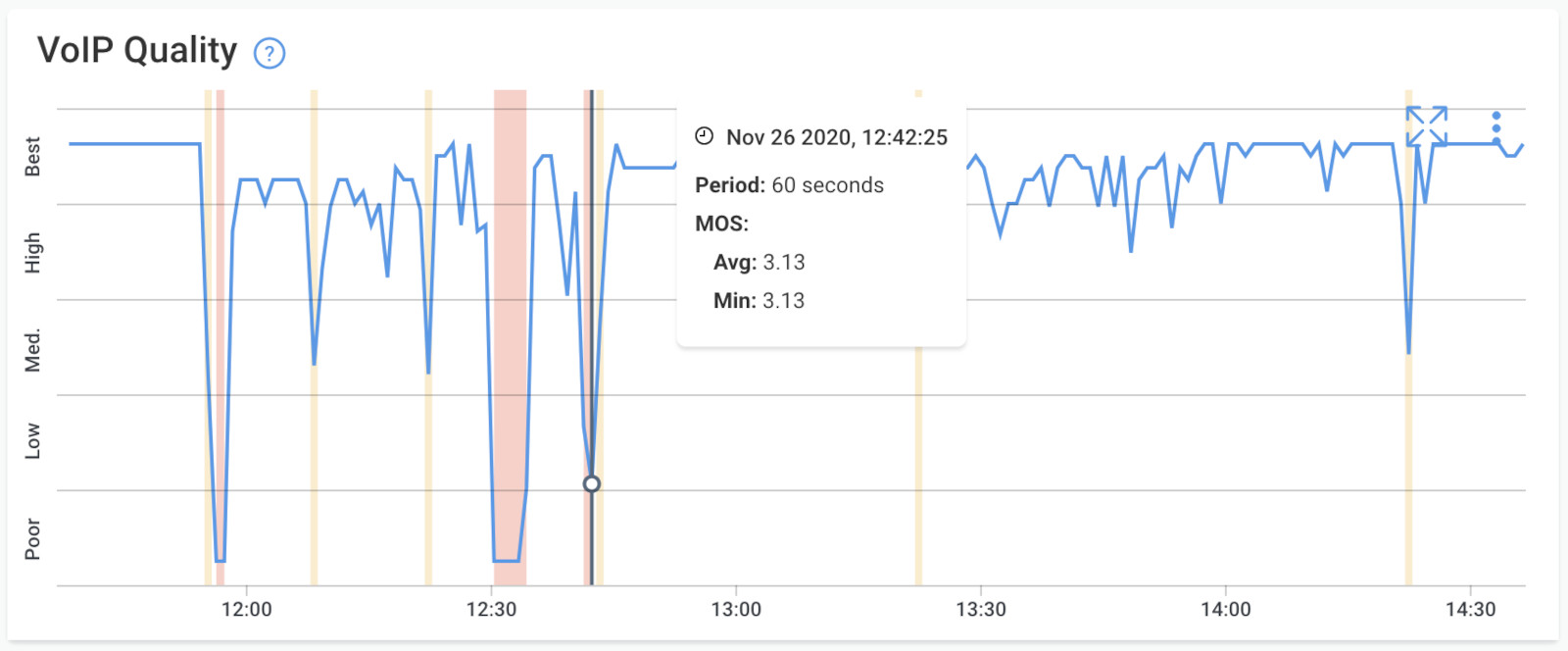
In general, a MOS score of 4 or higher is regarded as excellent audio quality, reflecting a positive VoIP experience akin to that of a traditional phone call. Users perceive clear and reliable audio in this range.
Conversely, a MOS score below 3 is considered subpar, indicating low-quality audio and an unsatisfactory VoIP experience. In such instances, the audio may be distorted, choppy, or robotically distorted, making conversation comprehension challenging.
Ultimately, striving for a high MOS rate is crucial in providing a satisfactory VoIP experience, ensuring users are content with the audio quality during their calls.
In addition to MOS score, Obkio also measures a variety of other network metrics that are crucial to a high-performing VoIP service. Monitoring and optimizing these metrics collectively provides a comprehensive view of the health and performance of your VoIP network. Regularly assessing these parameters enables proactive identification of issues, ensuring that QoS for VoIP is maintained at a high standard.
- Latency: Low latency, also referred to as good latency, is critical for real-time communication to maintain a natural and smooth conversation.
- Jitter: Consistent packet arrival times are essential for smooth VoIP communication. High jitter can lead to uneven audio quality and interruptions.
- Packet Loss: Packet loss can result in missing or distorted audio in VoIP calls. Minimizing packet loss is crucial for clear and uninterrupted communication.
- Bandwidth Utilization: Monitoring bandwidth utilization ensures that VoIP has sufficient resources to transmit data without contention, preventing congestion-related issues.
- Codec Performance: Monitoring the performance of the selected codec is essential, as it impacts audio quality and bandwidth utilization.
- DSCP Markings: Proper DSCP markings help routers and switches prioritize VoIP packets, ensuring they receive preferential treatment over other data types.
- Call Setup Time: Quick call setup is crucial for a seamless user experience. Prolonged setup times can lead to frustration and impact the perceived quality of service.
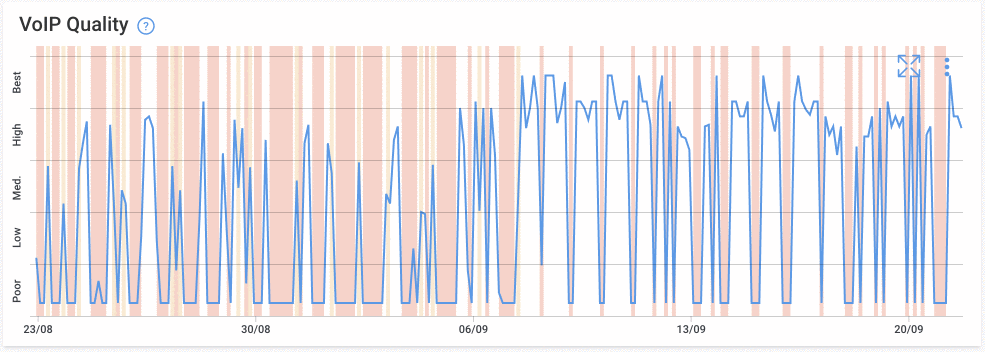
Having navigated through the intricacies of implementing QoS for VoIP, it's time to witness the real impact in action. In this section, we delve into the tangible advantages of QoS for VoIP by addressing and resolving common challenges.
From mitigating jitter, latency, and packet loss to conquering bandwidth limitations and network congestion, discover how QoS not only tackles obstacles but transforms VoIP communication into a seamless and reliable experience. Let's explore the solutions that showcase the true prowess of QoS for enhancing VoIP performance.
Jitter, latency, and packet loss can disrupt the smooth flow of VoIP communication, leading to degraded audio quality and user dissatisfaction. Variability in packet arrival times (jitter), delays in packet transmission (latency), and the loss of transmitted packets (packet loss) are often attributed to network congestion or suboptimal configurations.
Solutions:
- Traffic Prioritization: Prioritize VoIP traffic over other data types using QoS mechanisms to minimize the impact of jitter, latency, and packet loss.
- Error Correction Mechanisms: Implement error correction techniques, such as Forward Error Correction (FEC), to mitigate the effects of lost packets.
- Buffer Management: Optimize buffer sizes to handle jitter and latency more effectively, preventing the negative impact on VoIP call quality.
Insufficient bandwidth can lead to call quality degradation, causing issues like voice distortion or dropped calls. High network usage, limited bandwidth allocation for VoIP, or competing data traffic can contribute to bandwidth limitations.
Solutions:
- Bandwidth Allocation: Ensure an adequate portion of the network bandwidth is dedicated to VoIP traffic through effective QoS policies.
- Compression Techniques: Implement codec optimization and compression techniques to reduce the amount of data transmitted during VoIP calls.
- Bandwidth Expansion: If feasible, consider expanding overall network bandwidth to accommodate growing VoIP demands.
Congestion occurs when the network experiences excessive demand, leading to performance issues for VoIP and other applications. Overloaded network nodes, sudden spikes in data traffic, or insufficient QoS measures can contribute to congestion.
Solutions:
- Traffic Shaping: Implement traffic shaping to regulate the flow of data, preventing congestion and ensuring a smoother experience for VoIP traffic.
- Dynamic Bandwidth Adjustment: Utilize QoS mechanisms that dynamically adjust bandwidth allocation based on real-time network conditions.
- Prioritization Policies: Establish clear prioritization policies to ensure that VoIP traffic is given preference over less time-sensitive data during congestion.
Effectively addressing these common challenges with targeted solutions ensures that QoS for VoIP remains robust and capable of delivering a high-quality communication experience. Regular monitoring, timely adjustments to QoS configurations, and staying abreast of network conditions contribute to a proactive approach to resolving and preventing VoIP issues.


As we approach the conclusion of our exploration into Quality of Service (QoS) for Voice over Internet Protocol (VoIP), let's cap off this journey with some essential best practices. These final recommendations are geared towards optimizing your VoIP experience, ensuring that the implemented QoS measures continue to deliver seamless and high-quality communication. Let's delve into these last few nuggets of wisdom before we wrap up our article.
- Understand Network Requirements: Before implementing QoS, thoroughly assess the network's characteristics, including bandwidth, latency, and existing traffic patterns. A clear understanding of network requirements forms the foundation for effective QoS configuration.
- Prioritize VoIP Traffic: Establish clear prioritization policies to ensure that VoIP traffic receives preferential treatment over less time-sensitive data. Prioritizing VoIP traffic prevents delays and disruptions, maintaining a high-quality communication experience.
- Implement Traffic Shaping: Utilize traffic shaping to regulate the flow of data within the network, preventing congestion and ensuring a smoother experience for VoIP traffic. Traffic shaping optimizes bandwidth usage and minimizes the impact of sudden traffic spikes on VoIP performance.
- Configure DSCP Markings: Differentiated Services Code Point (DSCP) markings help classify and prioritize packets, signalling the level of service for each packet. Proper DSCP markings enable routers and switches to effectively prioritize VoIP packets, ensuring consistent quality.
- Optimize Codec Selection: Choose and optimize codecs based on the balance between audio quality and bandwidth efficiency. The right codec selection minimizes bandwidth usage while preserving acceptable audio quality for VoIP calls.
- Ensure Adequate Bandwidth: Allocate sufficient bandwidth to accommodate VoIP traffic, preventing congestion and preserving call quality. Adequate bandwidth ensures that VoIP calls receive the resources they need for optimal performance.
- Monitor and Analyze Performance: Implement network monitoring tools like Obkio to continuously assess VoIP performance, analyzing key metrics such as latency, jitter, and packet loss. Regular monitoring allows for the proactive identification of issues, enabling prompt troubleshooting and optimization.
- Regularly Review QoS Configurations: Periodically review and audit QoS configurations to ensure they align with evolving network conditions and requirements. Regular reviews help adapt QoS settings to changes in network traffic and maintain effectiveness over time.
- Educate Network Administrators: Provide training for network administrators on QoS best practices and the specific requirements of VoIP traffic. Educated administrators can make informed decisions and adjustments, contributing to the overall success of QoS implementation.
Adhering to these best practices ensures that QoS for VoIP is not only implemented effectively but also remains adaptable to the dynamic nature of networks. By prioritizing traffic, optimizing configurations, and embracing continuous improvement, organizations can harness the full benefits of QoS for a superior VoIP experience.
As we draw the curtains on our exploration of QoS for VoIP, let's recap the journey. We embarked on a comprehensive journey, diving into the intricacies of QoS implementation and monitoring for optimal VoIP performance. From understanding the fundamentals of VoIP technology to deciphering the significance of QoS and its role in prioritizing voice traffic, we navigated through key concepts and practical considerations.
The implementation phase saw us configure routers, prioritize traffic, and set policies to ensure that VoIP communication takes precedence over other data types. We delved into the critical realm of monitoring, emphasizing the importance of real-time alerts, historical performance analysis, and the utilization of metrics such as latency, jitter, and packet loss.
Throughout this process, the goal remained clear: to create an environment where VoIP not only operates seamlessly but thrives with superior audio quality and reliability.
Throughout this journey, Obkio’s Network Performance Monitoring tool emerged as a valuable ally, offering real-time insights into network health, VoIP quality, and the overall performance of QoS configurations. With Obkio’s NPM tool, organizations gain not just visibility but the power to proactively optimize their network for optimal VoIP experiences.
In the fast-evolving landscape of communication technologies, the journey doesn't end here. It continues with a commitment to ongoing optimization, adaptation to emerging technologies, and a keen eye on the evolving needs of users.
Take charge of your network's destiny with Obkio. Proactively monitor, analyze, and optimize your VoIP communication to deliver unparalleled clarity and reliability. Elevate your network performance by leveraging the insights offered by Obkio's NPM tool.
- 14-day free trial of all premium features
- Deploy in just 10 minutes
- Monitor performance in all key network locations
- Measure real-time network metrics
- Identify and troubleshoot live network problems



























 Obkio Blog
Obkio Blog





